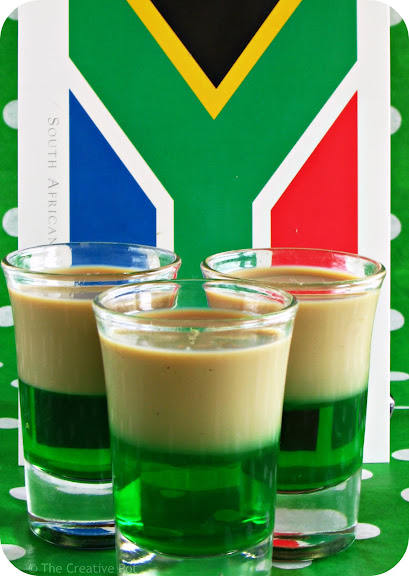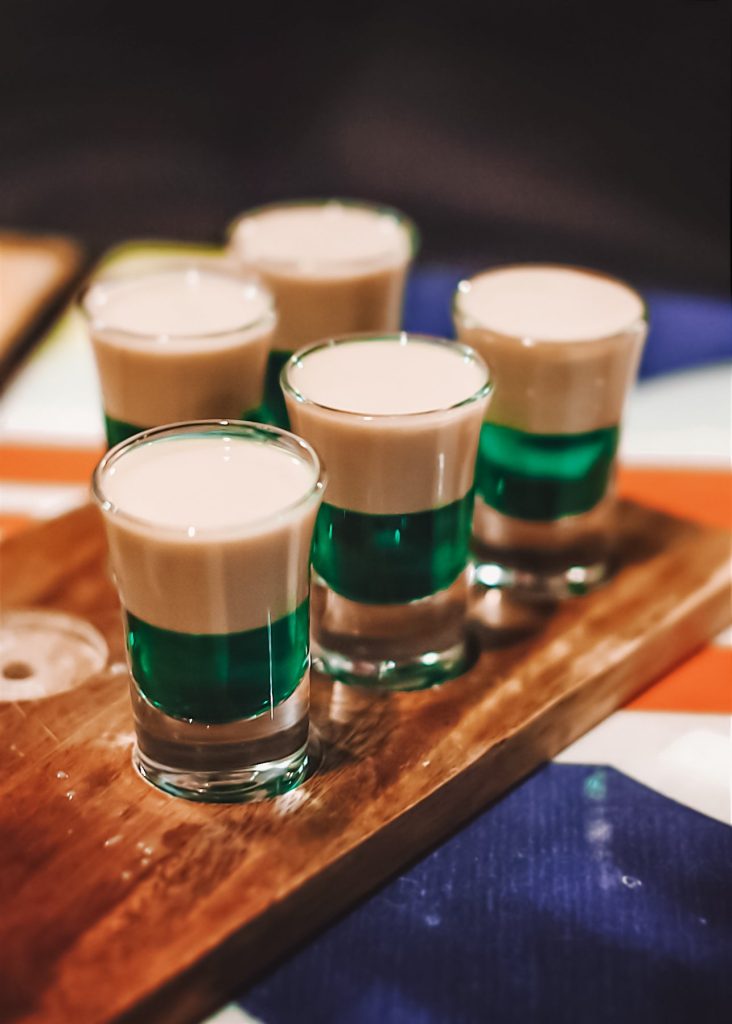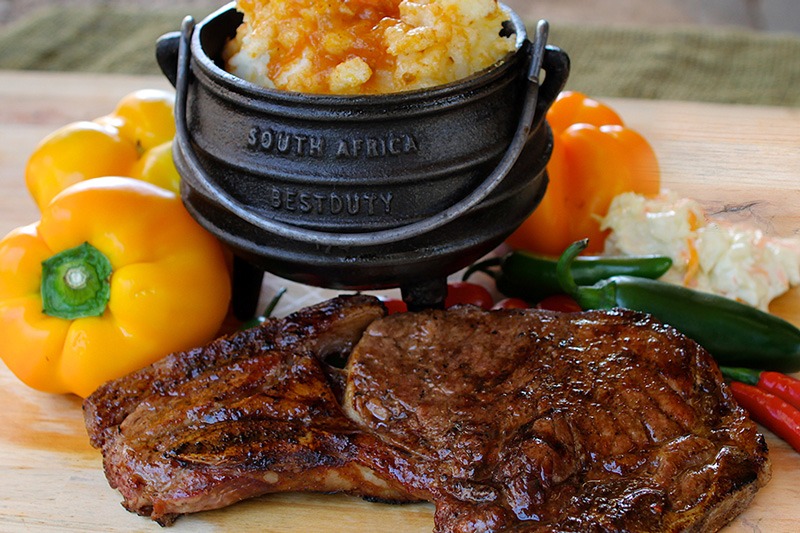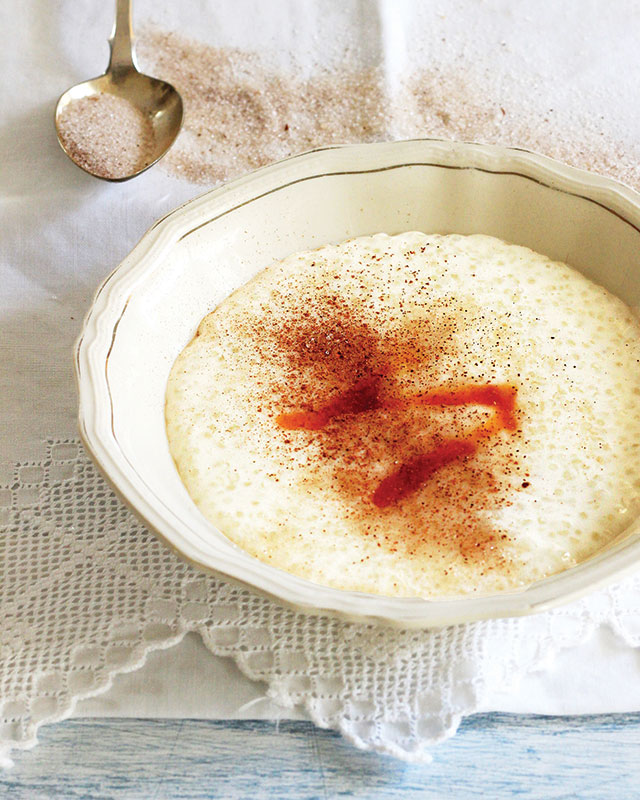South African Culinary Delights: Amarula Don Pedro, Springbokkie, Braai/Shisa Nyama Tradition, and Melkkos Recipe
The Amarula Don Pedro is a delightful and indulgent cocktail that combines the rich, creamy flavors of a classic Don Pedro with the unique taste of Amarula, a South African cream liqueur made from the Marula fruit. Here’s a simple recipe for making an Amarula Don Pedro:
Amarula Don Pedro Recipe:
Ingredients:
- 2 scoops of vanilla ice cream
- 2 ounces (60 ml) Amarula cream liqueur
- 1 ounce (30 ml) whiskey (usually a South African whiskey like Three Ships or any whiskey of your choice)
- Chocolate syrup (optional, for garnish)
- Whipped cream (optional, for garnish)
- Crushed ice (optional)
Instructions:
- Prepare the Glass:
- Drizzle chocolate syrup inside a chilled glass, coating the sides for a decorative touch.

- Add Ice Cream:
- Place two scoops of vanilla ice cream into a blender.
- Pour Amarula and Whiskey:
- Add 2 ounces of Amarula cream liqueur and 1 ounce of whiskey to the blender.
- Blend:
- Blend the ingredients until smooth and creamy. If you prefer a thicker consistency, you can add crushed ice before blending.
- Pour into Glass:
- Pour the blended mixture into the prepared glass.
- Garnish (Optional):
- Top with a dollop of whipped cream if desired. You can also drizzle a bit more chocolate syrup on top for an extra touch of sweetness.
- Serve:
- Serve the Amarula Don Pedro immediately with a straw or spoon.
Enjoy this decadent cocktail with its creamy texture and the unique flavor profile of Amarula. It’s a delightful dessert drink perfect for special occasions or a sweet treat after a meal.
Springbokkie – A South African Peppermint Liqueur

A Springbokkie is a popular and vibrant South African shooter or layered drink that combines two distinct liqueurs to create the colors associated with the South African national rugby team, the Springboks. Here’s a simple recipe for making Springbokkies:
Springbokkies Recipe:
Ingredients:
- 1/2 ounce (15 ml) Peppermint Liqueur (such as Peppermint Schnapps)
- 1/2 ounce (15 ml) Amarula Cream Liqueur
Instructions:
- Chill the Liqueurs:
- It’s best to chill both the Peppermint Liqueur and Amarula in the refrigerator beforehand to ensure a refreshing and cold shot.
- Layering:
- Using a shot glass, pour the Peppermint Liqueur into the glass as the first layer. Tilt the glass slightly and pour the liqueur gently over the back of a spoon to create the bottom green layer.
- Carefully layer the Amarula Cream Liqueur on top of the Peppermint Liqueur by pouring it over the back of the spoon, creating the top white layer.

- Serve:
- Serve the Springbokkie immediately.
- Shot Technique (Optional):
- For a traditional South African touch, serve the Springbokkie with a technique known as “the hand of God.” Hold the shot glass in one hand, cover it with the other hand, and slam it down on the table to create a layered effect. Be cautious when using this technique to avoid spillage.
Enjoy the Springbokkie as a fun and colorful shooter, often shared during celebratory moments or as a festive drink during social gatherings. The combination of the cool mint flavor and the smooth creaminess of Amarula makes it a popular choice.
Fascinating Things to Note About Braai/Shisa Nyama Tradition
Braai, also known as Shisa Nyama in South Africa, refers to the act of grilling or barbecuing meat, and it’s an integral part of South African culture. Shisa Nyama, a Zulu phrase that translates to “burn meat,” specifically refers to a barbecue or grill where people gather to enjoy freshly grilled meat, socialize, and celebrate. Here’s a glimpse into the tradition of Braai/Shisa Nyama:
Braai/Shisa Nyama Tradition:
1. Social Gathering:
- Braai/Shisa Nyama is more than just a method of cooking; it’s a social event. Friends and family gather around the grill to enjoy good company, music, and, of course, delicious grilled food.
2. Variety of Meats:
- The grill is typically loaded with a variety of meats, such as boerewors (sausages), steaks, lamb chops, chicken, and more. The meat is often marinated or seasoned before grilling.
3. Outdoor Setting:
- Braais/Shisa Nyama often take place in outdoor settings, whether it’s in someone’s backyard, at a park, or at designated Shisa Nyama establishments. The open flame and smoky aroma add to the outdoor ambiance.
4. Marinades and Sauces:
- Meats are often marinated or basted with flavorful sauces, spices, or marinades. These can range from simple salt and pepper to more complex spice blends or homemade sauces.

5. Side Dishes:
- While the focus is on the grilled meat, Braai/Shisa Nyama gatherings may include side dishes like salads, bread, or traditional South African accompaniments such as chakalaka (a spicy vegetable relish) and pap (maize porridge).
6. Celebrations and Events:
- Braais/Shisa Nyama are popular during celebrations, holidays, and weekends. It’s a time for relaxation, celebration, and enjoyment.
7. Cultural Significance:
- Braai/Shisa Nyama is deeply ingrained in South African culture and is considered a way of life. It transcends cultural and ethnic boundaries, bringing people together over a shared love for grilled food.
8. Shisa Nyama Establishments:
- In urban areas, Shisa Nyama has evolved into a business model with dedicated Shisa Nyama establishments where patrons can select their meats and have them grilled on-site. These establishments often feature live music and a festive atmosphere.

9. National Heritage Day:
- National Heritage Day in South Africa, celebrated on September 24th, is often referred to as “Braai Day.” It encourages South Africans to come together, light a fire, and celebrate their diverse cultural heritage through the tradition of Braai/Shisa Nyama.
Braai/Shisa Nyama is more than just a way of cooking meat; it’s a cultural phenomenon that brings people together, celebrates community, and showcases the rich culinary traditions of South Africa.
Melkkos A Traditional South African Dish Recipe
The origins of Melkkos, a beloved South African comfort food, are somewhat elusive, with no single inventor credited with its creation. Instead, its roots trace back to various sweet milk-based dishes found in different cultures around the world. Notably, Melkkos bears a striking resemblance to “boeber,” a traditional Cape Malay delicacy. The Cape Malays, primarily of Indonesian descent, settled in South Africa centuries ago, bringing with them their culinary traditions.
The Cape Malay community’s presence in South Africa dates back to the 16th century, comprising Indonesian exiles, enslaved individuals from various African countries, and migrants from China. Over time, their culinary influences merged with local ingredients and cooking methods, resulting in dishes like boeber, which shares similarities with Melkkos.
While Melkkos recipes may vary from family to family, the basic ingredients typically include milk, flour, butter, and cinnamon sugar. However, modern adaptations may feature additional elements such as sago, vermicelli, and condensed milk. This diversity allows for personalization, leading to the creation of unique family recipes passed down through generations.
Regardless of its exact origins or variations, what remains paramount is the joy of enjoying a warm bowl of Melkkos, a comforting treat cherished by South Africans across the country. Whether prepared with traditional ingredients or with a modern twist, Melkkos continues to evoke feelings of nostalgia and satisfaction, making it a beloved staple in South African households.
Melkkos, a traditional South African dish, translates to “milk food” in Afrikaans. It is a comforting, porridge-like dish made with flour, milk, butter, and sugar, often flavored with cinnamon. Melkkos is typically served as a warm and hearty breakfast or dessert. Here’s a simple recipe for making Melkkos:

Melkkos Recipe:
Ingredients:
- 1 cup all-purpose flour
- 2 tablespoons butter
- 4 cups milk
- 2 tablespoons sugar (adjust to taste)
- 1/4 teaspoon salt
- Ground cinnamon for sprinkling (optional)
- Cinnamon sugar for serving (optional)
Instructions:
- Prepare the Dough:
- In a mixing bowl, combine the flour, salt, and butter. Rub the butter into the flour until it resembles breadcrumbs.
- Cook the Dough:
- In a pot, heat the milk until warm but not boiling. Gradually add the flour mixture to the warm milk, stirring continuously to avoid lumps.
- Continue stirring and cooking over medium heat until the mixture thickens and forms a soft dough-like consistency. This may take about 10-15 minutes.

- Sweeten the Melkkos:
- Add sugar to the dough and stir until well combined. Adjust the sweetness according to your taste.
- Serve:
- Ladle the warm Melkkos into bowls. Sprinkle ground cinnamon on top if desired.
- Optional: Cinnamon Sugar:
- For an extra touch of sweetness, you can sprinkle cinnamon sugar on top of each serving.
- Enjoy:
- Serve the Melkkos warm and enjoy it as a comforting breakfast or dessert.
Serving Suggestions:

- Melkkos is often enjoyed with a sprinkle of ground cinnamon or a dusting of cinnamon sugar on top.
- You can customize the sweetness according to your preference by adjusting the amount of sugar.
Melkkos is a simple and comforting dish that brings warmth and nostalgia. It’s a perfect choice for a cozy breakfast or a satisfying dessert, especially on chilly days.
Read More South African Refreshments: Rooibos Tea, Homemade Mageu, and the Traditional AMASI Recipe
Add a Comment
You must be logged in to post a comment.

